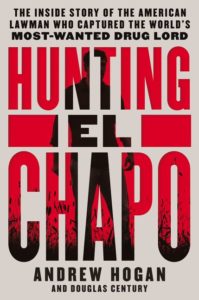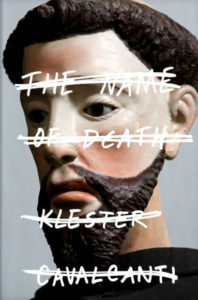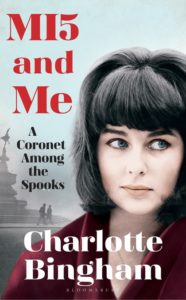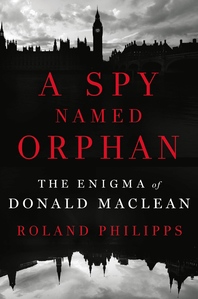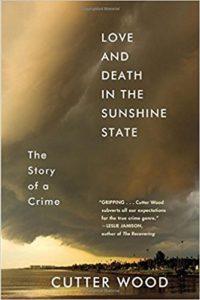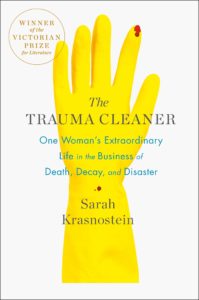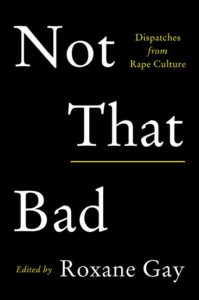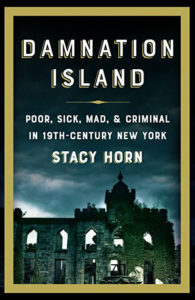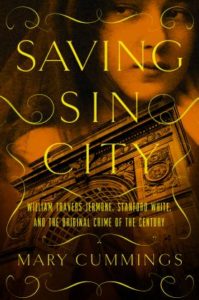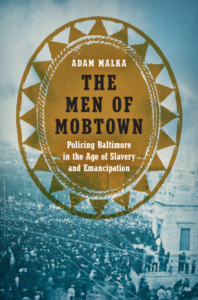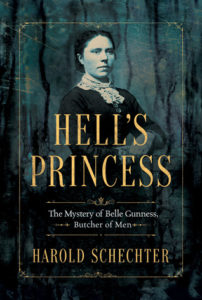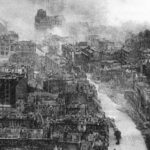These are boom days for writers and readers looking for thoughtful, hard-hitting stories about real-life crime. Whether you’re in the mood for an historical study, a high-octane page-turner, a brooding investigation, or a penetrating memoir, chances are there’s a book (and many a podcast or docu-series) out there for you. Every month, we’ll be rounding up the best new crime non-fiction with recommendations from CrimeReads staff. We’ll start with an omnibus April and May breakdown, since spring was flush with so many quality true crime reads. (In keeping with the new movement, we’ll be using ‘true crime’ broadly to cover crime non-fiction.)
Here are 16 selections for Spring 2018:
COPS AND GANGSTERS
Jonathan Green, Sex Money Murder
Green’s account of a notorious Bronx gang headquartered in the tough Soundview housing projects is not for the squeamish. The gang takes over the crack trade in the projects and branches out to deal in other East Coast cities, places like Buffalo, New York and Springfield, Massachusetts, where the drug is much more valuable due to its scarcity. They also kill with impunity: to be an enemy of the gang is to basically write your death warrant. Expertly reported and written in a crisp, no nonsense style, Sex Money Murder is a glimpse into a violent criminal lifestyle rarely documented.—Lisa Levy, CrimeReads contributing editor
Andrew Hogan and Douglas Century, Hunting El Chapo
An inside account of the international effort to capture (and hold) the notoriously slippery cartel kingpin now awaiting trial in the Southern District of New York. Century and Hogan (the latter, a former DEA special agent leading up a team charged with tracking El Chapo Guzman) tell a good adrenaline-soaked tale, full of hard-boiled anecdotes and adventures from the field. For those who’ve followed the cat-and-mouse action in the news, or for fans of Don Winslow’s Cartel books, this one will help fill in an already colorful (and oftentimes tragic) story.—Dwyer Murphy, CrimeReads senior editor
Klester Cavalcanti, The Name of Death
For seven years, Brazilian investigative journalist Klester Cavalcanti would have regular phone calls with a man named Julio Santana, a devout family man who was also a prolific assassin with decades of experience and a grisly body count numbering into the hundreds. The result of those conversations, The Name of Death, is a vivid portrait of both the working life of a killer haunted by misdeeds past and future, and of the violent interior territories of Brazil. You won’t soon forget reading this one, and you probably won’t know quite what to think at the end, either. —DM
SPIES
Charlotte Bingham, MI5 and Me
Bingham, the bestselling historical romance novelist, writes a damn rollicking memoir. As a young woman, Bingham was summoned by her father, informed that he was a spy, and soon after put to work as a secretary at MI5, Britain’s famed domestic intelligence agency. She conjures up those days in rich detail, full of larger-than-life figures, strange schemes, and parties that lasted for days, a world where minor aristocrats, spies, and scenesters mixed freely and often.—DM
Monte Reel, A Brotherhood of Spies
Monte Reel’s latest book is a thrilling account of a US espionage breakthrough—the development of the lauded U-2 spy planes—and the incident that almost brought the world’s two great powers to a head, just at the moment when peace seemed within reach. The story of Francis Gary Powers, the U-2 pilot shot down and held prisoner in the Soviet Union, has been told before, but Reel offers up lush detail about the political firestorm his capture set off, and just what, exactly, was at stake when the US’ great technological leap was exposed to Soviet eyes.—DM
Roland Phillips, A Spy Named Orphan
A biography of Donald Maclean, one member of the notorious Cambridge Five spy ring, the posh double agents working for years for the Soviet Union from inside the British establishment. I’ll never get tired of reading about this story, one of the most puzzling and fascinating incidents in the annals of espionage. How could a double life be maintained so thoroughly, for so long, and at such a high level of government service? What does it say about the Cold War, Britain, human nature? A Spy Named Orphan goes a long way toward answering a part of those questions.—DM
FLORIDA
Cutter Wood, Love and Death in the Sunshine State
When a MFA student staying in a sleazy Florida motel starts researching an arson and a disappearance, true crime poetry is born. Cutter Wood, a writing student at Iowa, investigates the disappearance and murder of a local woman in a small Florida town, and in doing so, finds “the symptoms of a universal decay, among which the disappearance of a woman was only the most striking example.” Read an excerpt from Love and Death in the Sunshine State here. —Molly Odintz, CrimeReads associate editor
Gilbert King, Beneath a Ruthless Sun
Gilbert King’s new book has the potential to be the historical crime investigation that takes up the mantle from David Grann’s sensation, Killers of the Flower Moon. King looks at the many layers of corruption and mystery swirling around a late 1950s case stemming from the rape of a Florida citrus baron’s wife. A backwards local sheriff railroads a series of suspects, while a crusading journalist pushes ahead in the face of tremendous resistance and secrecy. King’s book unfolds a conspiracy implicating institutional racism, mental healthcare, treatment of the mentally impaired, and the fabric of Southern town life in the buildup to a truly tumultuous era.—DM
MEMOIRS AND PROFILES
Piper Weiss, You All Grow Up and Leave Me
Weiss’s hybrid book blends a memoir of an extremely privileged childhood on Manhattan’s upper east side with a true crime story about her tennis teacher, Gary Wilensky, who became fixated on one of his students and killed himself after a failed attempt to kidnap the object of his desire. In researching the book and telling both her own story and Wilensky’s, Weiss tries to make sense of Wilensky’s behavior—the title refers to something he once told her about his charges, that teenage girls inevitably become grown women and put aside their teenage fantasies and desires. As the teenaged Weiss exults in being one of “Gary’s Girls,” looking forward to her lessons and hanging out with Wilensky, who treated his students like adults, the grown woman Weiss obsesses about Wilensky’s habits and his eventual crime, when he tried to bring a girl to an upstate cabin dubbed a “Cabin of Horrors” by the media. You All Grow Up and Leave Me is thoughtful and strikes the right balance between recollections of childhood and the digging the adult Weiss has done in order to make sense of Wilensky’s actions.—LL
Sarah Krasnostein, The Trauma Cleaner
The elevator pitch for the trauma cleaner would go something like this: Australian journalist follows woman who owns a cleaning service that specializes in scouring crime scenes, the homes of suicides, and other difficult jobs (quite a few of her clients are hoarders or suffer from mental illness and have to be handled very sensitively). But there’s more: Sandra Pankhurst, the extremely hands-on owner of the service, is a transsexual who left her former wife and sons when she decided to live as a woman. Pankhurst is an engaging, sympathetic, and fascinating person, and Krasnostein does an excellent job of balancing Pankhurst’s personal story with those of her clients.—LL
CRIME & CULTURE
Roxane Gay (editor), Not That Bad: Dispatches From Rape Culture
Roxane Gay has assembled this anthology from an incredible roster of contributors, each essay layering another set of thoughts, ideas, and experience onto a collection that explores how rape culture can permeate every facet of our lives.—MO
Kirk Wallace Johnson, The Feather Thief
A fascinating account of a bizarre crime. In 2009, an American flautist with an obsession for salmon fly-tying robbed the British Museum of Natural History, stealing some of its most treasured feathers. Kirk Wallace Johnson lays out a riveting narrative of the crime itself, as well as a larger portrait of the intricate sub-cultures of bird fanatics, fly fishermen, and fly-tyers. The Feather Thief is one of the more peculiar and gripping crime stories in recent memory.—DM
HISTORICAL CRIME
Stacy Horn, Damnation Island
An intense study of Roosevelt Island’s dark past, when the city’s mentally ill, indigent, and sick were gathered up and jettisoned onto the East River Island and left in deplorable conditions. Horn’s research is thorough and her subject matter spine-chillingly compelling. With gothic undertones, she lays out the story of the city’s huddled masses penned off and largely forgotten, until now.—DM
Mary Cummings, Saving Sin City
The strange love triangle and bizarre crimes that ensnared Stanford White, Evelyn Nesbitt, and Harry K. Thaw in turn-of-the-century New York never cease to fascinate, tying together all the decadence and turbulence of Gilded Age New York. Mary Cummings has found a new angle on the story, focusing on the ambitious young prosecutor, William Travers Jerome, out to make his name and career sorting through the rubble and bringing some modicum of justice to the situation. For historical crime buffs and New Yorkers, this is the crime, and the story, that always seem so resonant.—DM
Scott Stern, The Trials of Nina McCall
A shocking investigation into a national policy, known sadistically as the “American Plan,” whereby young women coming of age were systematically subjected to physical examinations, diagnosed with often mysterious STDs, and then shipped off to prison-like medical facilities for forced treatment, without any hint of judicial process or appeal. Stern’s study of this long-running program is a damning piece of research and a withering look at morality codes masquerading as criminal justice and public health.—DM
Adam Malka, The Men of Mobtown
In this absorbing history of policing in 19th century Baltimore, Adam Malka uses a close case study to fill out our understanding of the evolution of policing, vigilantism, and property in 19th century America. While works such as the seminal text The New Jim Crow have carefully illustrated how militarized policing and mass incarceration have exploded over the past few decades, leading to the effective lifelong loss of civil rights by millions of people of color, the history of policing as a means of incarcerating disproportionate numbers of African-Americans has its origins in the mid-19th century. True crime isn’t just accounts of those events largely accepted by the wider population as “crimes.” True crime is also the history of the criminalized, of policing, of incarceration, of property, and of state power as manifested in societal control. Baltimore is a liminal city, on the threshold of North and South, with a history marked by intersecting slavery and freedom, mobs and minorities, rights and restriction, making Baltimore the perfect setting to examine power, property, and policing.—MO
Harold Schechter, Hell’s Princess
Belle Gunness was once infamous nation-wide (and across the pond) as the “Lady Bluebeard,” a prolific late-19th century Norwegian-American serial killer. She murdered her husbands for their life insurance policies, as well as killing several young children under her care, and committing multiple arsons (where she honed her abilities to cheat the insurance companies). In possession of a sizable farm, Belle Gunness lured her victims by advertising as a widow looking for a new husband to help her run it. The men, in pursuit of her property, instead met their own demise, often involving gruesome “accidents” with farm equipment. This true crime narrative does justice to the larger-than-life Belle Gunness and her fascinating context, keeping the reader immersed in the story even as we recoil from its many horrors.—MO



